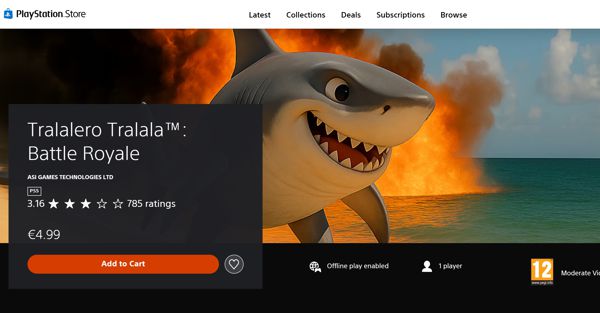Italian BrainRot: Now It's Invading Video Games Too

One of the most viral social media trends of 2025 is undoubtedly brainrot, a term that Oxford Dictionary named word of the year 2024. These are videos generated with generative artificial intelligence, in which absurd characters—such as "Crocodile Bomber," "Capuchin Ballerina," or "Tung Tung Tung Sahur"—move against psychedelic backgrounds while a synthetic voice recites nonsensical phrases. These nonsensical videos blend irony, the surreal, and, at times, politically incorrect provocations, often bordering on bad taste.
One of the first videos to define the imagery of this trend, which is rewriting the aesthetics of contemporary memes, was "Tralalero Tralalà," in which an anthropomorphic shark, wearing blue sneakers, recites verses accompanied by AI-generated audio. The video, initially uploaded to TikTok in January 2025, sparked a wave of imitations and reworkings, eventually reaching record numbers: over 7 million views for the single video and 3 billion global views for the entire phenomenon.

Thanks to algorithms that promote the most viral content, stumbling upon these nonsensical videos has become relatively easy, from TikTok, which started the trend, to YouTube, which has always monetized creators with rewards per view. The result is a system in which while many are fascinated by and influenced by brainrots (especially younger Gen Z and Gen Alpha audiences), just as many profit from creating them and riding the trend.
Various creators sell video lessons, guides, tutorials, and courses on how to generate viral content with AI: instructions for building your own "brainrot" universe and making it big on TikTok, with prices ranging from €50 to €500 per course. And on Discord, there are private communities where users exchange prompts for creating brainrots and techniques for generating "extreme" content while circumventing software guidelines. For some time now, that same aesthetic has begun to invade online gaming platforms, from the PlayStation Store to Nintendo, via Steam and the Google Play Store. In short, brainrots—willingly or not—have become a business model, as well as an aesthetic.
Not content with conquering social media, these memes are now invading the world of video games, as evidenced by the PlayStation and Nintendo store pages. According to a report by IGN, a leading international publication dedicated to video games and digital entertainment, the PlayStation Store and Nintendo eShop are literally inundated with these low-quality titles, which some are bluntly calling "trash."
ilsole24ore





